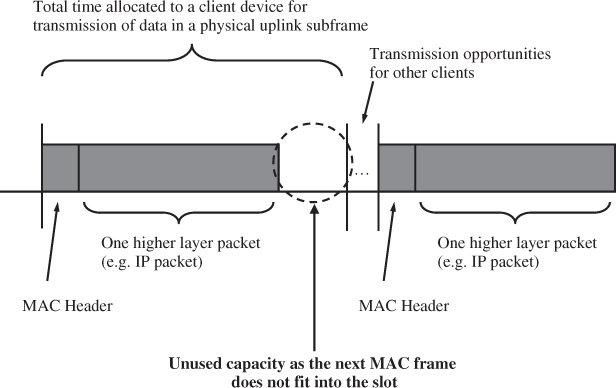5.7 MAC Management of User Data
Apart from managing the overall connection between the subscriber station and the network, the MAC layer also performs a number of tasks on the user data being delivered from higher layers of the protocol stack such as IP or 802.3. A number of these functions are described in this section.
5.7.1 Fragmentation and Packing
Similar to other systems that coordinate the use of the air interface from a central point, 802.16 SSs are assigned uplink opportunities by the base station to send their data. The maximum size of MAC frames is 2048 bits. Therefore, it is possible to put a complete higher layer frame into a single MAC packet. While the uplink is assigned to a SS, it can send several consecutive and independent MAC frames. This is especially useful if IP is used as a higher layer protocol as packet sizes can vary from packet to packet and MAC frames that contain only a single higher layer frame may not fit exactly into the uplink opportunity allocated to the SS. This situation is shown in Figure 5.10.
Figure 5.10 Inefficient use of the air interface without fragmentation and packing.

To facilitate efficient use of resources on the air interface, a sender can split a higher layer packet (e.g. an IP packet) into two (or more) parts and send them in two (or more) MAC frames. This eliminates transmission gaps as the MAC frame with the first part of a ...
Get From GSM to LTE: An Introduction to Mobile Networks and Mobile Broadband now with the O’Reilly learning platform.
O’Reilly members experience books, live events, courses curated by job role, and more from O’Reilly and nearly 200 top publishers.

